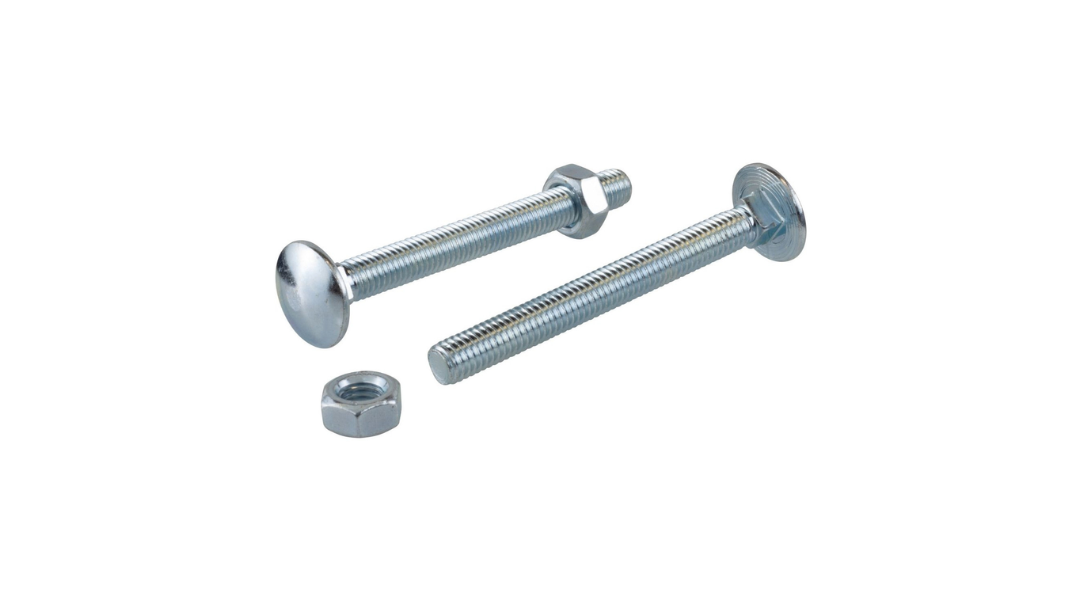Nuts and bolts are essential fasteners used to join and secure various objects. They come in different sizes and materials, serving as the building blocks of countless structures and devices.
What are Nuts?
Nuts are like small metal or plastic pieces with a hole in the middle (an internally threaded hole) that can be threaded onto a bolt or screw. They are designed to fasten objects tightly.

What are Bolts?
Bolts are threaded fasteners that consist of a long, cylindrical rod with external threads (screws) along a portion of their length. They are designed to be used with nuts, which have internal threads, to create a strong and secure connection.

Primary Uses and Purposes of Nuts and Bolts
|
Nuts |
Bolts |
|
Fastening and Securing: Nuts are primarily used to fasten and secure objects together. When threaded onto a bolt or screw, they create a strong and adjustable connection, holding parts firmly in place.
Joining Materials: Nuts are essential for joining materials like metal, wood, plastic, and more. They enable the assembly of structures, machinery, and devices.
Adjustability: Nuts allow for fine-tuning and adjustments in the tightness of connections. You can easily tighten or loosen them to control the level of compression or tension in an assembly.
Load Distribution: Nuts help distribute the load or force applied to the fastener evenly across the connected surfaces, reducing the risk of damage or deformation.
Securing Components: Nuts are often used to secure various components, such as wheels on axles, pipes in plumbing systems, and fixtures in construction.
Reassembly and Maintenance: Nuts facilitate the disassembly and reassembly of parts and components for maintenance, repairs, or upgrades.
|
Fastening and Assembly: Bolts are used to fasten and assemble parts and components together. They are inserted through holes and secured with nuts to create a sturdy connection.
Structural Support: Heavy-duty bolts are essential for load-bearing and structural applications, providing stability and strength to buildings, bridges, and infrastructure.
Adjustability: Bolts, when used with nuts, allow for adjustments in the tension and alignment of connected parts, ensuring precise assembly.
Versatility: Bolts come in various lengths, diameters, and materials, making them adaptable to a wide range of construction and industrial tasks.
Corrosion Resistance: Bolts made from corrosion-resistant materials like stainless steel are used in environments where rust or corrosion is a concern.
High Strength: High-strength bolts are designed for applications requiring exceptional load-bearing capacity, such as in construction and heavy machinery.
|
Different Types of Nuts and Bolts along with their Common Uses:
|
Types of Nuts: |
Types of Bolts |
|
Hex Nuts: Hexagonal nuts are the most common type, used with hex bolts and screws. They are widely used in construction, machinery, and general fastening applications.
Nyloc Nuts: These nuts have a nylon insert that resist loosening due to vibrations. They are used in automotive, machinery, and aerospace applications.
Wing Nuts: Wing nuts have two wing-like projections for easy hand tightening. They are often used in applications where quick assembly or disassembly is required, such as furniture and lighting fixtures.
Lock Nuts: Lock nuts include a locking mechanism to prevent unintentional loosening. They are common in automotive and machinery where security is essential.
Cap Nuts (Acorn Nuts): Cap nuts have a domed shape, providing an attractive and protective cover for exposed fasteners. They are used in decorative and architectural applications.
|
Hex Bolts: Hexagonal head bolts are the most common type, used with hex nuts. They are versatile and suitable for a wide range of applications.
Coach Bolts: Coach bolts have a rounded head with a square neck, preventing them from turning when tightened. They are used in woodworking and fastening to wood or metal.
Eye Bolts: Eye bolts have a looped head and are used for attaching cables, chains, or hooks in lifting or hanging applications.
U-Bolts: U-bolts have a U-shaped bend and are used for securing pipes, tubes, or other cylindrical objects to a surface.
Toggle Bolts: Toggle bolts are used for anchoring heavy objects to hollow walls or ceilings. They have a spring-loaded wing that opens behind the wall for added stability.
|
It's important to note that while these nuts are often used with the corresponding bolt types, nuts are generally designed to be compatible with most bolts.

To conclude, nuts and bolts are indispensable in almost every industry and are vital for assembling, securing, and maintaining structures, machinery, and devices in our modern world. Their adaptability, strength, and reliability make them essential components for countless applications.


